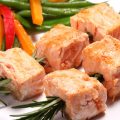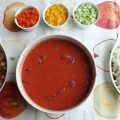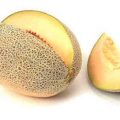Food philosophy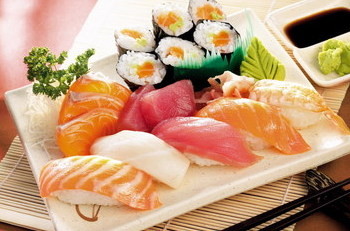 Japanese foodTraditional Japanese cuisine– this is not just a collection of culinary recipes, it is a whole philosophical system aimed at teaching a person to independently achieve health, youth and longevity. The Japanese nutrition system is based on two components, yin and yang, denoting the feminine and masculine principles. Products and drinks are divided according to the presence of these elements in them. You can achieve health and establish a balance of yin-yang energy in the body in different ways. First of all, it is important to eat fresh natural products and avoid spices, chemical ingredients, coffee and tea, which contain chemical dyes. You should drink natural Japanese or Chinese tea. If possible, it is necessary to reduce the amount of yin products - potatoes, eggplants, tomatoes. Try to eat less off-season vegetables and those products that are produced far from the place of residence. As for animal proteins, the meat of wild animals is preferable to that obtained from domestic animals. For the proper assimilation of food, the psychological attitude is also very important. In Japan, it is customary to tune into a positive mood before lunch, to cast aside all worries and vain thoughts. Cornerstone The author of the book "Japanese Miracle Nutrition", Katsuzo Nishi, identified four golden rules that underlie the healing energy diet. The first rule is small portion sizes. When a portion is large, a person absorbs more than the body requires, and thereby only harms himself. Chopsticks - hashi, which the Japanese eat with, also help to maintain moderation in eating. Firstly, the very design of the chopsticks does not allow you to grab a large piece, but "eat little by little, chewing thoroughly" - one of the main rules of healthy eating. Secondly, manipulations with hashi develop fine motor skills of the hands, which are directly related to the level of intelligence and memory.
Japanese foodTraditional Japanese cuisine– this is not just a collection of culinary recipes, it is a whole philosophical system aimed at teaching a person to independently achieve health, youth and longevity. The Japanese nutrition system is based on two components, yin and yang, denoting the feminine and masculine principles. Products and drinks are divided according to the presence of these elements in them. You can achieve health and establish a balance of yin-yang energy in the body in different ways. First of all, it is important to eat fresh natural products and avoid spices, chemical ingredients, coffee and tea, which contain chemical dyes. You should drink natural Japanese or Chinese tea. If possible, it is necessary to reduce the amount of yin products - potatoes, eggplants, tomatoes. Try to eat less off-season vegetables and those products that are produced far from the place of residence. As for animal proteins, the meat of wild animals is preferable to that obtained from domestic animals. For the proper assimilation of food, the psychological attitude is also very important. In Japan, it is customary to tune into a positive mood before lunch, to cast aside all worries and vain thoughts. Cornerstone The author of the book "Japanese Miracle Nutrition", Katsuzo Nishi, identified four golden rules that underlie the healing energy diet. The first rule is small portion sizes. When a portion is large, a person absorbs more than the body requires, and thereby only harms himself. Chopsticks - hashi, which the Japanese eat with, also help to maintain moderation in eating. Firstly, the very design of the chopsticks does not allow you to grab a large piece, but "eat little by little, chewing thoroughly" - one of the main rules of healthy eating. Secondly, manipulations with hashi develop fine motor skills of the hands, which are directly related to the level of intelligence and memory.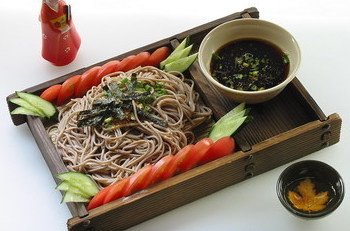 Japanese miracle foodThe second rule is -свежесть продуктов и соответствие сезону. Японцы весьма трепетно относятся к качеству продуктов, из которых собираются готовить. Выбор блюд для трапезы во многом определяет сезон и время года. Обычно в ходу именно то, что как раз созревает в поле или на грядках. Кроме того, предпочтение сезонной рыбе, которая вылавливается не иначе как в это время года. На выбор пищи кроме сезона влияет еще и погода. Зимой принято есть мясо, рыбу, согревающие напитки и супы, в летний зной – холодные супы, морепродукты, холодную лапшу рамэн и салаты.Третье правило – близость к натуральному, исходному виду продукта. Местные повара стремятся оставить неизменным внешний вид рыбы и овощей, чтобы и после приготовления они визуально остались сами собой.Четвертое правило – сохранение витаминов и минеральных веществ. Для достижения этой цели очень важен правильно выбранный температурный режим и особая нарезка овощей, которые нарезают таким образом, чтобы овощи не только выглядели привлекательнее, но и готовились быстрее. А, как известно, чем меньше затрачено времени на варку, тем больше витаминов и минеральных веществ сохраняется в продукте.Основа-основНа столе обязательно должно быть что-то с гор и что-то с моря. Горная продукция – это, конечно же, рис и многочисленные овощи по сезону. Это и соевые бобы, а также их производные: тофу (соевый творог), мисо (ферментированная соевая паста для приготовления супов и приправ) и соевый соус сею. Морская составляющая – практически все виды морской рыбы, китообразные, моллюски, медузы, а также водоросли и морская капуста.Рис едят два-три раза в день, чаще всего без приправ. Если японцу за столом не подали рис (гохан), то он считает трапезу незавершенной. Кстати, слово «гохан» означает не только рис, но и просто еду. Всем сортам риса японцы предпочитают, выращенный на родине, как самый полезный и вкусный. Местный рис здесь гораздо дороже привозного. Наиболее близким по вкусовым качествам считается рис из Калифорнии. Культ риса породил строгие каноны его приготовления. Сваренный по японской традиции рис не только вкусен, но и сохраняет большее количество полезных организму веществ.Рис по-японски варят без масла, соли и специй. Но самое главное – соблюдение пропорций: к одному стакану риса добавляют 1,25 стакана воды. Перед тем, как готовить, рис моют в большом количестве воды до тех пор, пока вода не станет прозрачной. Затем замачивают на 30 минут летом и на час зимой. Рис размягчается, и время варки уменьшается. Вследствие этого в нем сохраняется намного больше полезных веществ. Далее рис перекладывают в кастрюлю, добавляя положенное количество воды, и плотно закрывают крышкой, которую ни в коем случае не снимают до конца варки. Это важный момент, так как основной принцип приготовления риса в Японии – приготовление его на пару. Если крышку открыть, то часть необходимого для готовки пара улетучится, и варка пойдет в другом режиме. Крышку нельзя открывать еще и в течение 10 минут после готовности риса. После того, как вода закипела, рис варят на слабом огне, а доваривают на совсем малом. Во время варки соль не добавляют. В готовое блюдо кладут соевый соус, овощи, зелень – это делает его не пресным.Япония – островное государство, его берега омываются солеными водами Японского моря. Поэтому не удивительно, что вторым по значимости компонентом питания японцев является рыба и морепродукты. Сегодня японцы съедают 1/6 всех добываемых в мире морепродуктов. Рыбу принято не зажаривать, а только слегка обжаривать или тушить на пару. А то и подавать прямо сырой: праздничный стол обязательно включает в себя сырые рыбные блюда, причем именно из тех сортов рыб, которые, в зависимости от сроков нереста, наиболее вкусны в то или иное время года. Из предосторожности рыбу иногда замачивают в уксусе.
Japanese miracle foodThe second rule is -свежесть продуктов и соответствие сезону. Японцы весьма трепетно относятся к качеству продуктов, из которых собираются готовить. Выбор блюд для трапезы во многом определяет сезон и время года. Обычно в ходу именно то, что как раз созревает в поле или на грядках. Кроме того, предпочтение сезонной рыбе, которая вылавливается не иначе как в это время года. На выбор пищи кроме сезона влияет еще и погода. Зимой принято есть мясо, рыбу, согревающие напитки и супы, в летний зной – холодные супы, морепродукты, холодную лапшу рамэн и салаты.Третье правило – близость к натуральному, исходному виду продукта. Местные повара стремятся оставить неизменным внешний вид рыбы и овощей, чтобы и после приготовления они визуально остались сами собой.Четвертое правило – сохранение витаминов и минеральных веществ. Для достижения этой цели очень важен правильно выбранный температурный режим и особая нарезка овощей, которые нарезают таким образом, чтобы овощи не только выглядели привлекательнее, но и готовились быстрее. А, как известно, чем меньше затрачено времени на варку, тем больше витаминов и минеральных веществ сохраняется в продукте.Основа-основНа столе обязательно должно быть что-то с гор и что-то с моря. Горная продукция – это, конечно же, рис и многочисленные овощи по сезону. Это и соевые бобы, а также их производные: тофу (соевый творог), мисо (ферментированная соевая паста для приготовления супов и приправ) и соевый соус сею. Морская составляющая – практически все виды морской рыбы, китообразные, моллюски, медузы, а также водоросли и морская капуста.Рис едят два-три раза в день, чаще всего без приправ. Если японцу за столом не подали рис (гохан), то он считает трапезу незавершенной. Кстати, слово «гохан» означает не только рис, но и просто еду. Всем сортам риса японцы предпочитают, выращенный на родине, как самый полезный и вкусный. Местный рис здесь гораздо дороже привозного. Наиболее близким по вкусовым качествам считается рис из Калифорнии. Культ риса породил строгие каноны его приготовления. Сваренный по японской традиции рис не только вкусен, но и сохраняет большее количество полезных организму веществ.Рис по-японски варят без масла, соли и специй. Но самое главное – соблюдение пропорций: к одному стакану риса добавляют 1,25 стакана воды. Перед тем, как готовить, рис моют в большом количестве воды до тех пор, пока вода не станет прозрачной. Затем замачивают на 30 минут летом и на час зимой. Рис размягчается, и время варки уменьшается. Вследствие этого в нем сохраняется намного больше полезных веществ. Далее рис перекладывают в кастрюлю, добавляя положенное количество воды, и плотно закрывают крышкой, которую ни в коем случае не снимают до конца варки. Это важный момент, так как основной принцип приготовления риса в Японии – приготовление его на пару. Если крышку открыть, то часть необходимого для готовки пара улетучится, и варка пойдет в другом режиме. Крышку нельзя открывать еще и в течение 10 минут после готовности риса. После того, как вода закипела, рис варят на слабом огне, а доваривают на совсем малом. Во время варки соль не добавляют. В готовое блюдо кладут соевый соус, овощи, зелень – это делает его не пресным.Япония – островное государство, его берега омываются солеными водами Японского моря. Поэтому не удивительно, что вторым по значимости компонентом питания японцев является рыба и морепродукты. Сегодня японцы съедают 1/6 всех добываемых в мире морепродуктов. Рыбу принято не зажаривать, а только слегка обжаривать или тушить на пару. А то и подавать прямо сырой: праздничный стол обязательно включает в себя сырые рыбные блюда, причем именно из тех сортов рыб, которые, в зависимости от сроков нереста, наиболее вкусны в то или иное время года. Из предосторожности рыбу иногда замачивают в уксусе. The most popular Japanese fish dishes areSushi and sashimi are prepared from raw fish seasoned with hot horseradish wasabi and soy sauce. In raw fish, the set of microelements and vitamins remains practically untouched. Fish proteins are incomparably more useful than meat proteins. There is less cholesterol and more substances useful for the body. Fish is less caloric and easier to digest. Under the influence of Chinese tradition, meat also appeared in Japan, although initially the smell of pork and beef even made some Japanese faint. Meat for the Japanese today is only a delicacy, and not daily food. But local chefs approached the preparation of this product with traditional imagination and care. Japanese livestock breeders graze bulls on the cleanest meadows, feed them with selected food, give them spring water and beer to drink, and pamper the animals with electric massage every day. To prevent the bulls from overtiring, they are hung in cradles and given good music to listen to. The result is the famous "marbled meat", which is then cooked in front of the eaters using a teppanyaki grill table next to the dining table. An invariable element of a Japanese meal is vegetables. In order for vegetables to retain the necessary set of microelements and vitamins, they are eaten either raw or subjected to minimal cooking. Japanese diet Having tried to at least approximately change your diet in accordance with the rules described in this article, you will certainly do an invaluable service to your health and figure. In order to feel tangible results, try to adhere to the following real " " for two or three weeks. This diet is rich in all the substances useful for the body, is easily tolerated by everyone except inveterate meat eaters, and is quite varied. The daily diet should include:
The most popular Japanese fish dishes areSushi and sashimi are prepared from raw fish seasoned with hot horseradish wasabi and soy sauce. In raw fish, the set of microelements and vitamins remains practically untouched. Fish proteins are incomparably more useful than meat proteins. There is less cholesterol and more substances useful for the body. Fish is less caloric and easier to digest. Under the influence of Chinese tradition, meat also appeared in Japan, although initially the smell of pork and beef even made some Japanese faint. Meat for the Japanese today is only a delicacy, and not daily food. But local chefs approached the preparation of this product with traditional imagination and care. Japanese livestock breeders graze bulls on the cleanest meadows, feed them with selected food, give them spring water and beer to drink, and pamper the animals with electric massage every day. To prevent the bulls from overtiring, they are hung in cradles and given good music to listen to. The result is the famous "marbled meat", which is then cooked in front of the eaters using a teppanyaki grill table next to the dining table. An invariable element of a Japanese meal is vegetables. In order for vegetables to retain the necessary set of microelements and vitamins, they are eaten either raw or subjected to minimal cooking. Japanese diet Having tried to at least approximately change your diet in accordance with the rules described in this article, you will certainly do an invaluable service to your health and figure. In order to feel tangible results, try to adhere to the following real " " for two or three weeks. This diet is rich in all the substances useful for the body, is easily tolerated by everyone except inveterate meat eaters, and is quite varied. The daily diet should include: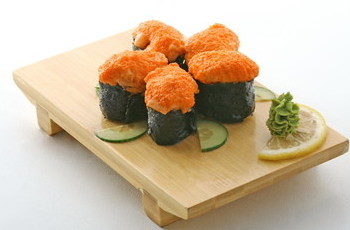
- 300-400 grams of rice (best unrefined, but white will do)
- 150-240 grams of fruit
- about 270 g of vegetables
- 60 g legumes
- 1 20 g of fish or seafood
- 100 g of milk
- one egg
- 2 teaspoons unrefined sugar
You can vary the products at your discretion, fromsalt is very desirable to refuse, you can use soy sauce. Drinks are allowed water, green and herbal teas. Try to pay attention to the design of the meal, then the food will benefit not only the body but also the soul! Enjoy your meal!





